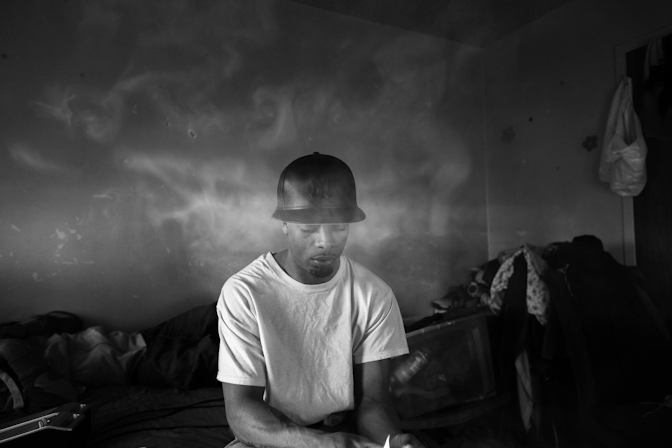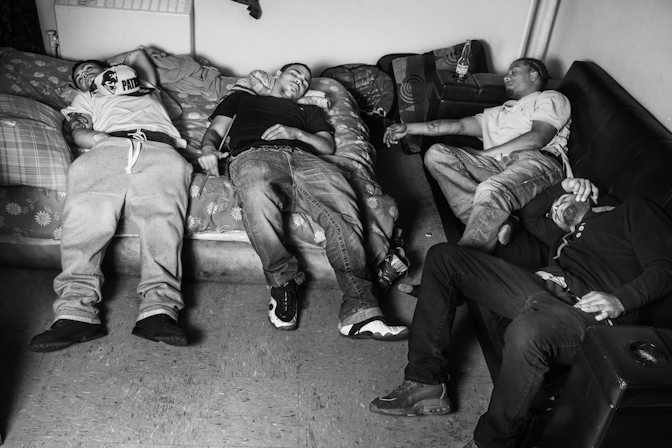
Inside Latin Kings: New York’s Most Powerful Gang
The Latin Kings are more of a family than a gang.
It was Nicolas Enriquez’s first year living in New York. The Colombian-born photojournalist came in search of The Bloodline chapter of the Latin Kings, one of the city’s most powerful gangs.
“Gangs were not new to me,” says Enriquez, who has made a career out of capturing urban conflict and struggle, “what was new was to know this Latino gang started as groups fighting against racism, creating comfortable spaces for Latino teenagers and families that had arrived in a new country.”
Founded in Chicago during the early 1940s, The Latin Kings were born of the harsh conditions that many immigrants face when they first arrive in the United States. Contrary to the stereotype of gangs, the Kings were formed to help their community get settled, teaching English and providing job opportunities to newcomers, helping them navigate the American Dream.
The Kings are made up of several factions, which remain loyal to their Windy City predecessors, known as the Motherland, but many have become thriving organizations of their own.
The Latin Kings New York chapter, The Bloodline, was founded in 1986 by Luis “King Blood” Felipe, who ran the gang from behind bars for years before he was placed in solitary confinement at a maximum-security prison in Colorado. Today, The Bloodline, also known as the Almighty Latin King and Queen Nation, has grown into one of the most influential branches of the group with an estimated membership of 7,500.
“Police abuse, deportation, and racism were the triggers for the creation of the Latin Kings back in the day and still are strong motives that keep the gang alive and growing,” says Enriquez.
But his photos document a side of gang life that falls just beyond the frame of the nightly news cameras. The stories of youth and family life defined by their fellow gang members.

“The family is all there is,” says Enriquez, “and somehow it’s also something that is missing from the lives of gang members.”
He points out that Latin Kings members, who often join between the ages of 13 and 17, come from broken homes where the Kings are the closest bonds they have. In that kind of environment, mentors who help the Latin Kings stay true to their roots can be the most crucial members of that family.
“We often associate gangs with organized crime and violence, and they are indeed problems that exist within the gang world,” he admits, “but if we analyze gangs in America, they are mostly formed by minority groups, people living in extreme poverty, victims of police abuse and racism, victims of the mass incarceration system in the U.S.”
Still, violence and the drug trade play significant roles in daily life on the margins of society.
“Street-level drug dealing is the main source of income for gang members today,” says Enriquez, “this means they have to deal with all the aspects that surround it…armed violence, fights for territory, and fear of ending up in jail.”
But Latin Kings members who hold true to their roots can provide a calmer sense community. Members like Smokey, the 25-year old leader of the Brooklyn Tribe. His influence on his fellow members stood out for Enriquez because it was a side of gang leadership he hadn’t expected.
“He was like an older brother and a father for all of the people following his lead,” Enriquez remembers, “he was constantly proving to everyone why he was in charge without violence or fear, but with education, friendly advice, family advice, work advice, he was always thinking about his brothers and sisters and how they could improve together.”








Murder holds a gun that he bought for $250 in the street. He bought it after guys from another gang stabbed one of his friends in the neck. (Photo by Nicolas Enriquez)












Herb Recommended Products:
READ MORE
